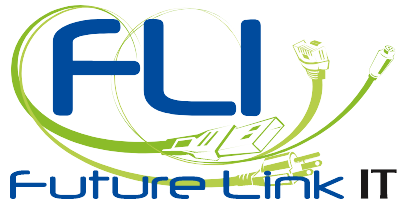Small to medium‑sized businesses across Chicago are increasingly turning to Managed Service Providers (MSPs) to handle everything from network monitoring and data management to cybersecurity. With ransomware attacks on the rise and more organizations relying on flat‑rate, monthly IT plans, selecting the right MSP partner can make or break your productivity—and your bottom line. Here are three hard‑hitting factors to weigh before you sign that contract.
1. Choose a Partner Who Treats Your Goals Like Their Own
Too many MSPs lead with awards and technical jargon instead of understanding your specific challenges. A true MSP partner operating in Chicago’s competitive market will dig into what makes your organization tick. They’ll want to know about your existing infrastructure, any past outages or data migrations you’ve wrestled with, and what your growth targets look like over the next year. By asking those questions up front, they can build a roadmap that not only slashes downtime but also aligns with your broader business objectives—whether that’s reducing ransomware risk or streamlining remote‑worker access.
2. Demand 24/7/365 Coverage—Because Ransomware Doesn’t Knock
Disasters and cyber threats don’t follow a 9‑to‑5 schedule, and neither should your IT support. Even if your office closes at 6 PM, an opportunistic hacker or a failing server can bring operations to a standstill in the middle of the night. Your ideal MSP will offer around‑the‑clock access to certified technicians and business continuity experts. When ransomware or network failure strikes, you need instant escalation paths and real‑time response. Having that safety net in place means you’ll never face an urgent “panic” call without someone who can remediate the breach, kick‑start your back up disaster and recovery protocols, and get your team back online fast.
3. Insist on Transparent Asset Tracking and Reporting
Accountability begins with visibility. If your MSP can’t show you precisely which servers, workstations, and software licenses are in play, you’ll always wonder if you’re overpaying—or worse, if a gap in coverage left you exposed to breach or compliance failure. The right provider will deliver detailed asset inventory management, hardware and software metrics, warranty tracking, and audit trails for every ticket they touch. Those reports aren’t just items on a spreadsheet; they become the foundation for proactive recommendations—like when to refresh aging hardware before it fails or how often to test your backup snapshots. In Chicago’s fast‑paced business climate, having clear sightlines into your IT environment is non‑negotiable.
4. Verify Robust Disaster Recovery and Business Continuity Planning
Every MSP will talk about backups—but few will show you a battle‑tested disaster recovery and business continuity plan. You need more than a promise of “daily snapshots”; you need to see real‑world simulations that prove your data and applications can be restored within your acceptable downtime window. Ask potential partners to walk you through a recent ransomware recovery exercise: How long did it take to spin up clean systems? Were any files lost or corrupted during the process? Can they meet your organization’s recovery time objective (RTO) and recovery point objective (RPO) under pressure? In a city like Chicago where compliance mandates for data privacy and operational continuity are only getting tougher, you can’t afford surprises
Conclusion
Run‐throughs aren’t a one‑and‑done checklist item. Your MSP should automate quarterly—or even monthly—DR tests, reporting pass/fail metrics and remediation steps. They should simulate different failure scenarios, from localized hardware crashes to full‑scale ransomware encryption events. Watching them execute a live restore proves they can mobilize their engineers and orchestrate your back up disaster and recovery workflows without you learning you’re at risk during an actual outage.
True resilience comes from layered backups and geographic redundancy. Confirm your provider maintains at least three copies of your data—primary production storage, on‑site secondary backup, and an off‑site or cloud archive. Those archives should be immutable (write‑once, read‑many) to withstand malicious deletion, and encrypted both at rest and in transit. This multi‑tier approach guarantees that even if one copy is compromised by a zero‑day exploit or a regional power failure, you’ll still have clean recovery points ready to deploy.
Finally, hold your MSP accountable to measurable service‑level agreements that matter to your Chicago business. Tie uptime SLAs and restoration deadlines to financial penalties or service credits. Demand transparent reporting after every DR test, and review these reports during quarterly business reviews. By embedding disaster recovery into your ongoing technology roadmap—rather than tacking it on as an afterthought—you’ll drive continuous improvement, reduce the impact of ransomware threats, and ensure your systems are not just backed up, but battle‑ready.
Finding the perfect MSP partner won’t happen with a single Google search, but the payoff is tangible: fewer emergencies, stronger ransomware defenses, and a back-up disaster and recovery strategy you can actually trust. Ready to put your IT in Chicago on autopilot? Contact our team at Future Link today and put our experts to the test—no sugar‑coating, just straight‑up results.

